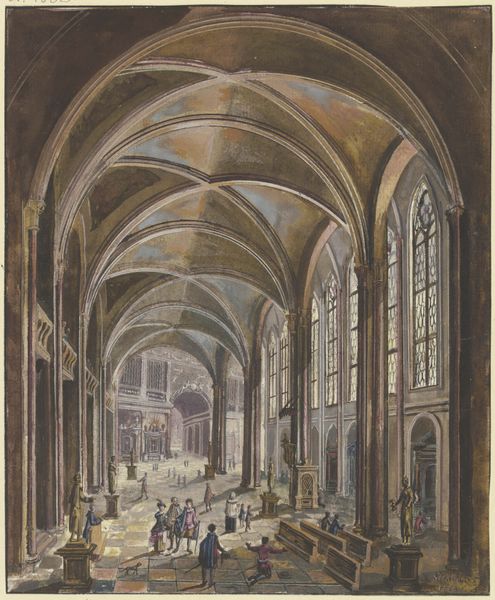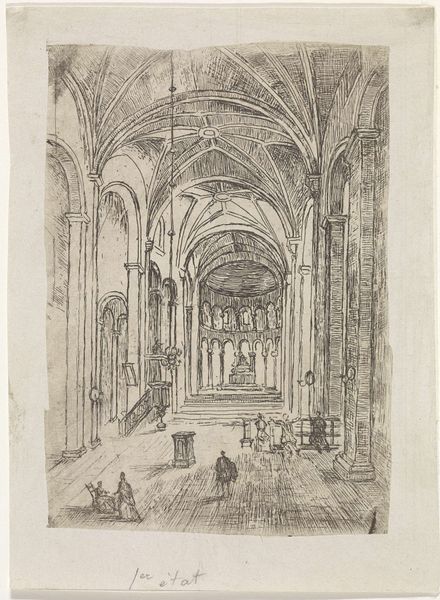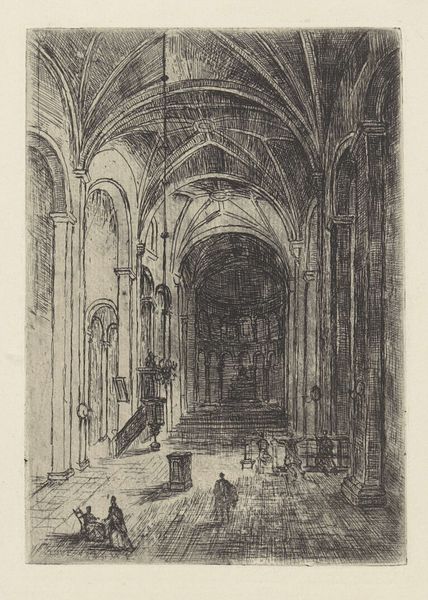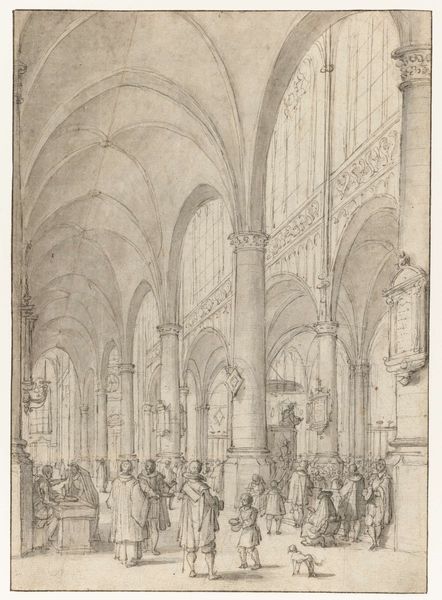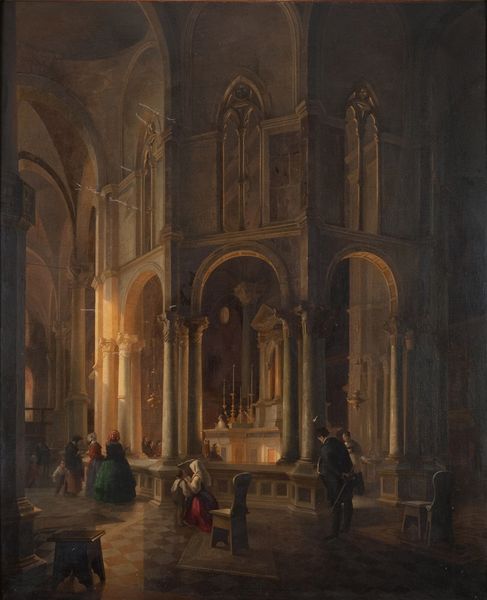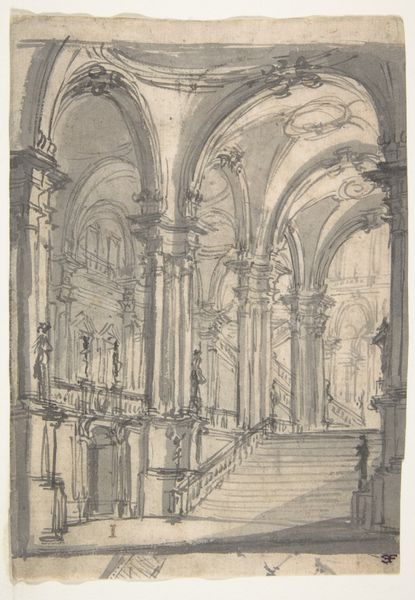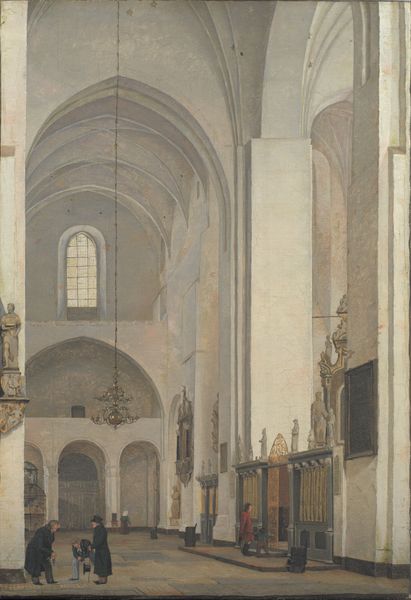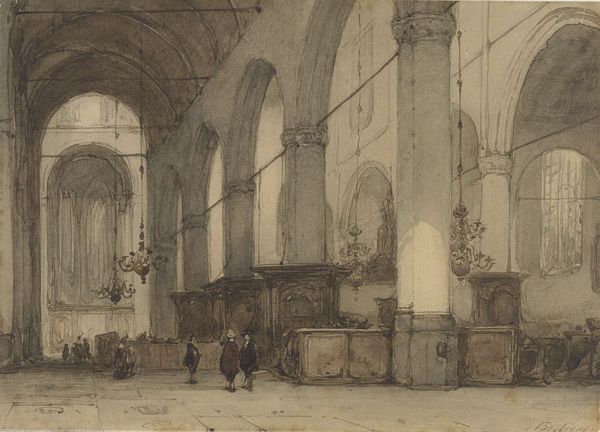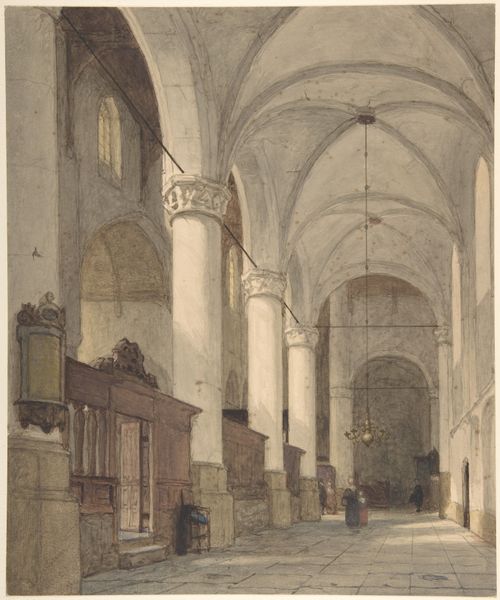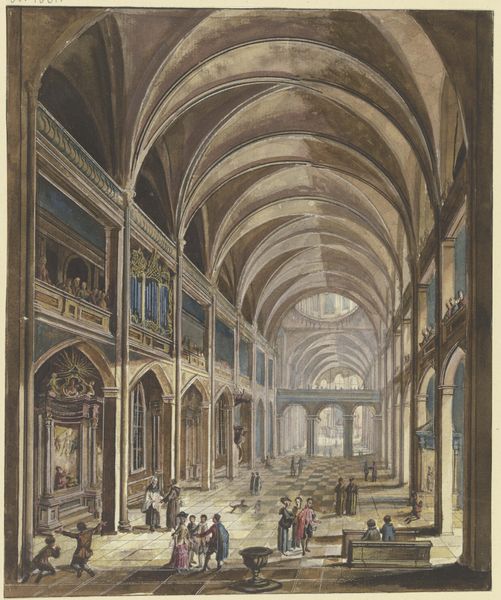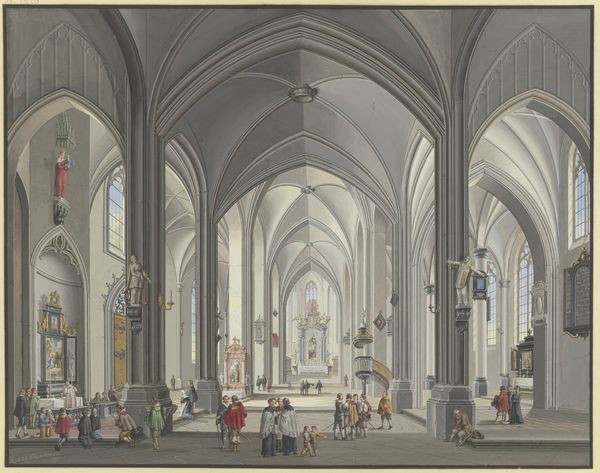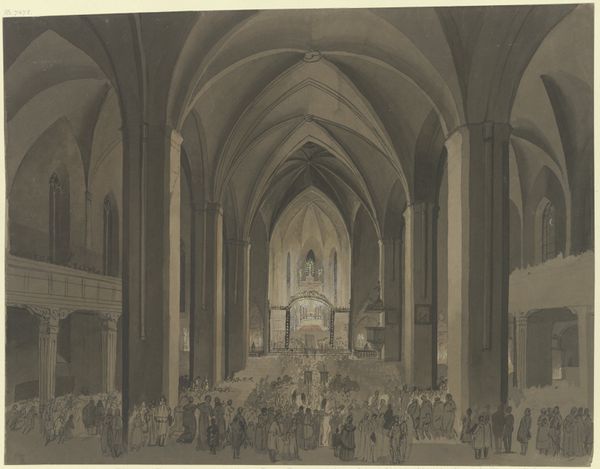
Dimensions: height 299 mm, width 248 mm
Copyright: Rijks Museum: Open Domain
Curator: Franz Alt's "Interieur van de Dom te Verona" invites us to consider not only the sacred space of a cathedral, but the social context of its use. This piece, which could have been completed any time between 1831 and 1914, appears to be a watercolor and colored pencil drawing. Editor: My first impression? Dim. It’s interesting how Alt captured the muted light and scale of the cathedral—the arches rising into the haze. It almost feels like you could reach out and touch the stonework. Curator: The perspective certainly amplifies the building’s monumentality. And you’re right to focus on materiality—the visible grid of the drawing, along with the use of watercolor and colored pencil, speaks to a specific process and intention. Editor: I agree. You can really see the artist's hand at work. It doesn't have that slick, mass-produced feel. Were these interior scenes typical for Alt, or did he usually work en plein air? Curator: Alt was quite interested in landscapes, but he often combined external views with intimate, interior settings, especially later in his career. These views served a purpose; they allowed him to express Romantic notions of spirituality and grandeur. Editor: Which is certainly felt in the architectural detailing of the cathedral, made with these earthly materials. Even the small figures within are framed by and almost secondary to the setting. Their role becomes about defining scale, not a moralising genre scene, don't you think? Curator: I would agree. And by depicting a gathering—what appears to be a religious service—Alt captures how individuals become part of a collective experience. In his broader work we could see the relationship between social behaviors and sacred architecture throughout 19th century Europe. Editor: I like the challenge Alt creates by putting Romantic themes into a structure made and built from collective human labour. It invites us to explore not just faith, but the socio-economic foundations upon which these expressions stand. Curator: Indeed, and the politics embedded within patronage, which have often influenced not only the creation of artworks such as these but access to them as well, here in places like museums. Editor: I'm glad that the materiality gives insight into this space and practice in a less formal or religious way, it's certainly refreshing.
Comments
No comments
Be the first to comment and join the conversation on the ultimate creative platform.

